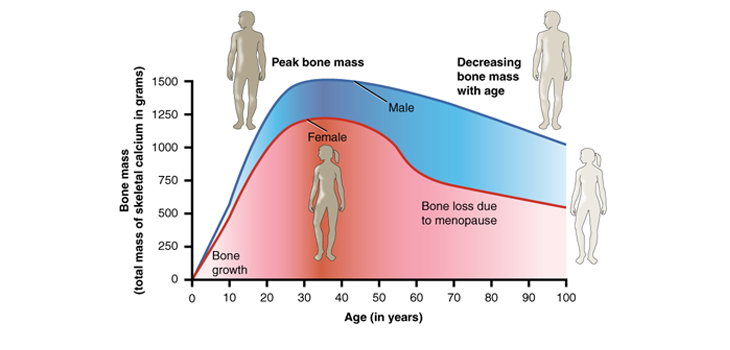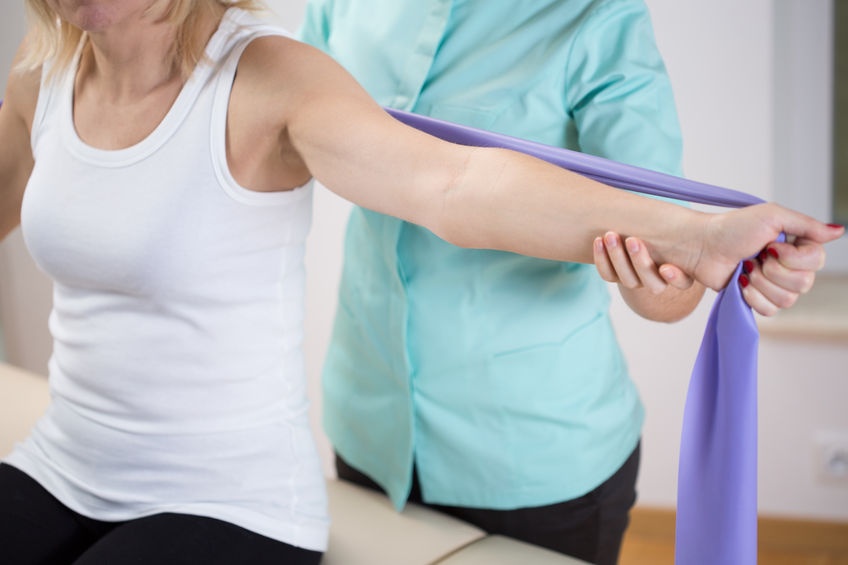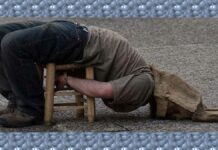Osteoporosis and Bone Health: Osteoporosis is a disease in which the density and quality of bone is reduced, which lead to increased risk of fractures and cause bone weakness, especially inspine, wrist and hip joints. Osteoporosis is a global health problem which affects approximately one in four women and one in five men, and the percentage is increasing day by day.
Sign and Symptoms
The bone loss in osteoporosis have no signs and symptoms. People may not know that they have the disease until their bones become thin, strain and fall causes a bone fracture. Bone loss in the spine may collapse with severe pain, loss of height, lump or stooped posture.
Risk Factors
- Age above 50
- Genetics
- Low body weight/being small and thin
- Bone fracture or weight loss
- Women, are more prone to fractures and have increased risk of osteoporosis.
- Reached menopause before age 45
- Smoking: Smokers are more prone to bone loss. Smoking decrease the levels of estrogen, reduces absorption of calcium and cause early menopause.
- Caffeine: Consumption of caffeine is a known modifiable risk factor for osteoporosis. Research suggest that increased consumption of caffeine increases calcium excretion through urine. Caffeine reduces the absorption of calcium in the body. It abducts the calcium and stop it to deposit in bone result in decreasing bone mass.
- Alcohol: Alcohol has some adverse effect on calcium level in body. High intakes of alcohol increase large quantities of calcium to lose in the urine. The calcium lost in urine is associated with a reduction in bone mass and person become more susceptible to fractures and the chances of development of osteoporosis increased.
- Menopause: Menopause causes in an increase of bone loss, which ranges from 4 to 8 percent in during the first 5 to 6 years post-menopause. After that, bone loss still continues but rate becomes low (0.8 to 1.5 percent per year). Lack of estrogen and development of osteoporosis is directly related during premenopausal and menopause. Early menopause and low hormone levels can cause loss of bone mass.
Also Read: All You Wanted To Know About Milk, Myths and Misconceptions
Stages: Osteoporosis has four stages:
- Stage 1 occurs in early 30s, when the breakdown of bone occurs at the same rate the body builds bone. There are no visible symptoms of osteoporosis in this stage.
- Stage 2 occurs in late 30s, when the breakdown of bone starts to happen with faster pace than the bone building done by body. There are also no visible symptoms in this stage, but bone-density tests can detect it.
- Stage 3 occurs usually after late 40s.thid stage makes bones weak and frail that they break because of stress that normal bones could easily bear. This is the first stage where most of the cases diagnosed.
- In Stage 4 bone fractures continue to occur, pain become unbearable, and person become disable. Spine, knee and hips joints are more susceptible to deformities. Locomotion and daily activities become a tough work. Luckily, with the increased technology this stage has become treatable. Future fractures can be prevented.

Pathophysiology
Bone formation is a process in which calcium and other minerals are deposited in bones by bone forming cells. Osteoporosis enhance the opposite process in which bone dissolving cells dissolve bone matter.in normal peoplethese two processes are in perfect balance which is important for the maintenance of healthy life with healthy bones. But in osteoporosis, the normal balance between these two processes is disturbed, bones become unbalanced, and bone become frail, thin, weak, more brittle, and percentage of fracture in people with osteoporosis in increased.
Consumption of Calcium
The DRI for calcium were determined by examining the stage of osteoporosis and its possible solutions. Normal recommendations of calcium is 2000IU. These levels are set to provide maximum calcium which are required by the normal healthy people. Taking calcium daily to meet these requirements are essential for the body, but its excess can cause serious intoxication. Calcium intakes above these levels can seriously have adverse effects on body.
Covid-19 And Social Psychology Of The “Distanced – Masked” Lifestyle
Foods that Should Not be Eaten in Osteoporosis:
A diet low in sodium helps the body to retain calcium, and reduce its excretion. Foods that should be avoided in osteoporosis:
- Salt added food
- Salted prepared meals or snacks
- Pickles especially fermented pickles as they are prepared in brine.
- Canned products as they are salt added foods.
- Processed products.
- Canned fish because fish already have some salt in its body.
Recommendations to Minimize the risk of Osteoporosis
- Take adequate amounts of calcium and Vitamin D as vitamin D is required for calcium absorption.
- Practice weight-bearing and muscle strengthening exercises like walking and jogging.
- Eat excess fruits, vegetables, and food that are required for healthy bones like milk.
- Avoid smoking and drinking alcohol.
- Maintain healthy weight.
- Take at least 2 cups of milk as per diet plan.
~ News4masses is now also on Google news
~ If you want to contribute an article / story, please get in touch at: news4masses[at]gmail[dot]com






















